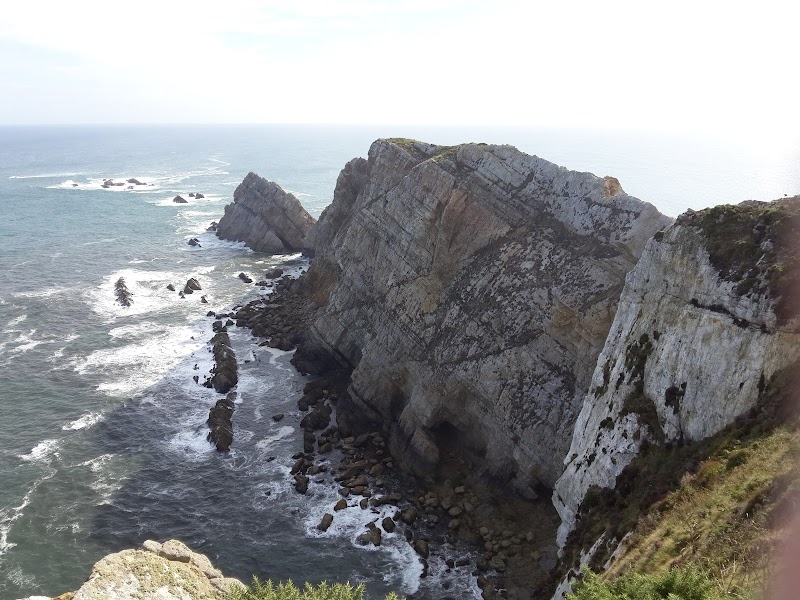Hiking to Cabo Peñas: Asturias’ Northern Edge for Untamed Ocean Vistas
Explore Cabo Peñas, Asturias’ northernmost point, on a hike that delivers sweeping ocean views and rugged coastal beauty. This practical guide blends immersive description with solid advice to prepare you for a rewarding adventure.
Pack for Wind and Sun
Cabo Peñas is exposed with frequent gusts and strong sunlight. Bring a windproof jacket and sun protection like a hat and sunscreen.
Footwear with Grip Matters
Uneven paths and rocky sections require sturdy hiking boots to maintain traction and avoid injury.
Hydrate Before and During
There are no water sources on the route, so carry at least two liters and drink regularly to stay energized.
Start Early to Avoid Afternoon Winds
Mornings offer calmer weather and better lighting for photography; afternoons can bring stronger coastal winds that challenge balance.
Hiking to Cabo Peñas: Asturias’ Northern Edge for Untamed Ocean Vistas
Cabo Peñas stands as the northernmost tip of Asturias, a rugged promontory where the Cantabrian Sea meets towering cliffs and wild winds command the landscape. The hike begins from a small village in Gozón, winding through pine-scented forests and open coastal scrub that challenge both breath and footing with a steady climb of roughly 200 meters. Covering about 7 kilometers round-trip, the trail threads narrow paths etched by salt and sea spray, with rocky outcrops daring you closer to the abyss, where seabirds wheel and currents push ceaselessly against the jagged coast.
The terrain demands attentive steps: expect patches of loose gravel, exposed roots, and occasional grassy slopes that soften the trail’s harder edges. As the forest opens, the wind changes personality—whipping and then caressing—inviting you to pause and drink in expansive views of restless ocean and dramatic cliffs. Cabo Peñas reveals itself gradually, a fierce and solitary landmark crowned by a lighthouse that has stood guard over shipping lanes since the early 20th century.
Timing your hike mid-morning allows sunlight to strike the cliffs at angles that bring out every crevice and crease, while afternoon winds can sharpen the air, reminding you to pack a shell or windbreaker. Water reservoirs are scarce, so carry at least two liters to stay hydrated throughout the ascent and return. Solid hiking boots with good grip will handle the uneven underfoot conditions and protect against sharp stones.
For those seeking more than a walk, this trail offers engagement with nature’s raw pulse — the sea’s roar melds with bird cries, and the cliffs seem to breathe beneath your feet. With each step, you’re not just moving forward but negotiating a dialogue with a place that is fiercely itself: wild, open, and honest. Cabo Peñas isn’t just a destination; it’s a test of resolve and a reward of wide vistas where the horizon stretches infinitely, promising a view that both grounds and elevates the spirit.
Whether you’re chasing sunrise light or the salty scent of the sea breeze, the hike to Cabo Peñas is an accessible adventure rich with sensory detail and elemental force. Prepare wisely, respect the terrain, and let the northern tip of Asturias leave its vivid mark on your journey.
Nearby Trips
All Adventures
Boat Charters
Water Activities
Adventures near Avilés
Discover the unique and memorable adventures that make Avilés special.
Frequently Asked Questions
How difficult is the hike to Cabo Peñas for a beginner?
The hike is moderately challenging, with some uneven terrain and elevation gain of about 200 meters over 3.5 kilometers one way. Beginners with reasonable fitness and stable footwear should be fine, but taking breaks and pacing yourself helps.
Are there any facilities at or near the cape?
Facilities are very limited at Cabo Peñas itself. There is a visitor center and parking near the lighthouse where you can get information, but no food or water services on the trail.
What wildlife can I expect to see along the hike?
Birdwatchers can spot seagulls, cormorants, and occasionally peregrine falcons. The coastal shrubland also houses small mammals and various butterflies in warmer months.
Is the trail well-marked?
The main route to Cabo Peñas is marked, but some sections require attention to follow correctly, especially near the cliffs where paths split. A map or GPS app is recommended.
When is the best time of day to hike for photography?
Mid to late morning captures the cliffs and ocean in the richest light, with softer shadows enhancing textures. Sunrise can also be dramatic but requires early arrival in darker hours.
Can this hike be combined with other nearby activities?
Yes, pairing Cabo Peñas with a visit to nearby beaches or the historic town of Avilés makes for a full-day coastal itinerary.
Recommended Gear
Sturdy Hiking Boots
Provide traction and protect your feet on uneven, rocky paths.
Windbreaker or Softshell Jacket
Protects against coastal winds and sudden temperature drops.
Water Bottle or Hydration Pack
Staying hydrated is critical due to exposure and lack of water sources.
Sun Protection (Sunscreen, Hat, Sunglasses)
Shields your skin and eyes from strong sun during exposed sections.
Local Insights
Hidden Gems
- "La Atalaya viewpoint offers a less crowded, equally stunning perspective of the cliffs and ocean below."
- "The small pebble beach near the base of Cabo Peñas is accessible by a faint trail and provides a quiet rest spot."
Wildlife
- "Keep an eye out for grey herons hunting near small inland ponds."
- "Seabird colonies along the cliffs are particularly active during spring nesting season."
History
"The lighthouse at Cabo Peñas has been operational since 1852, guiding sailors through the sometimes treacherous Cantabrian Sea. The area has a tradition of fishing and maritime navigation tied closely to local culture."

